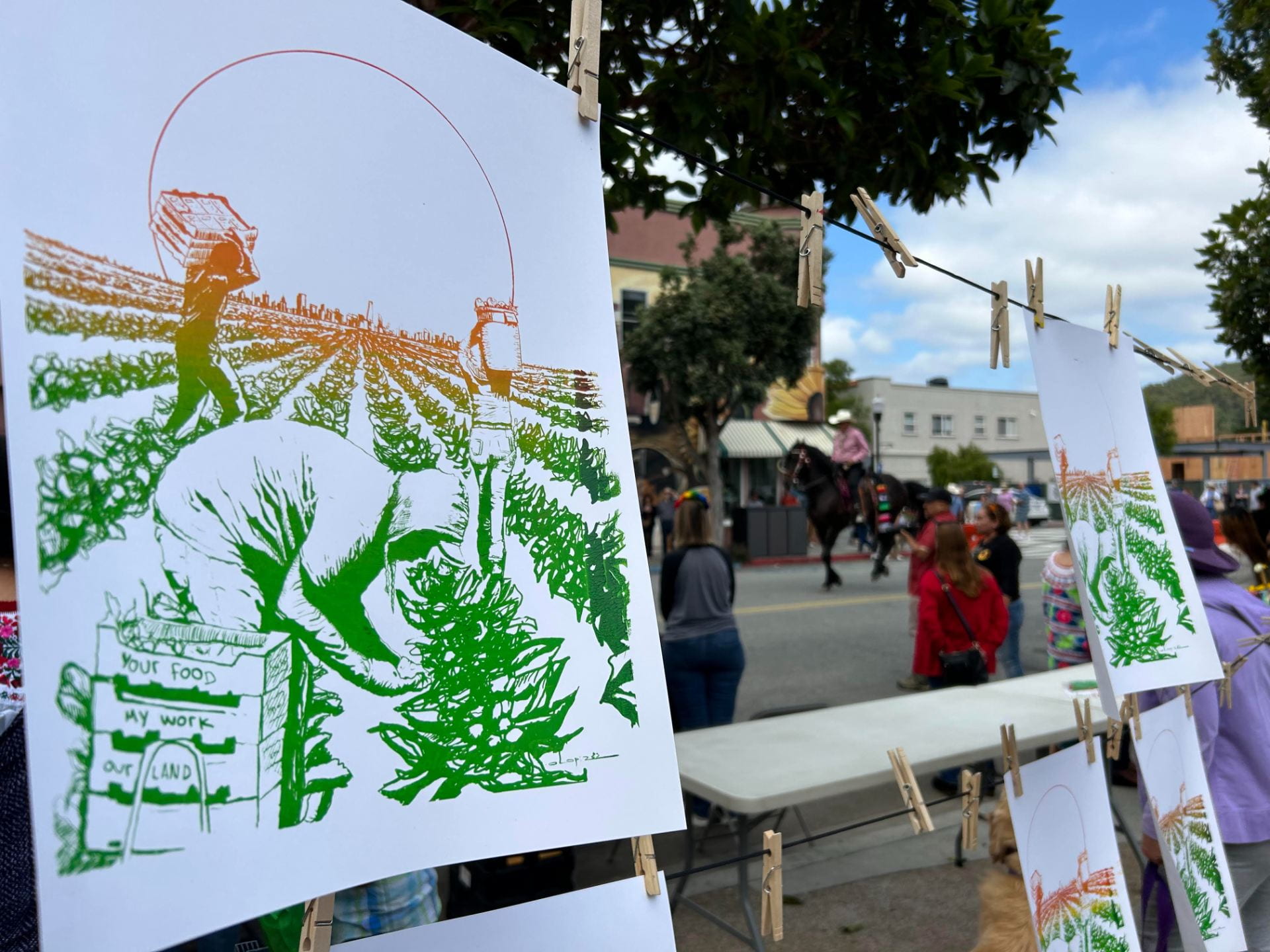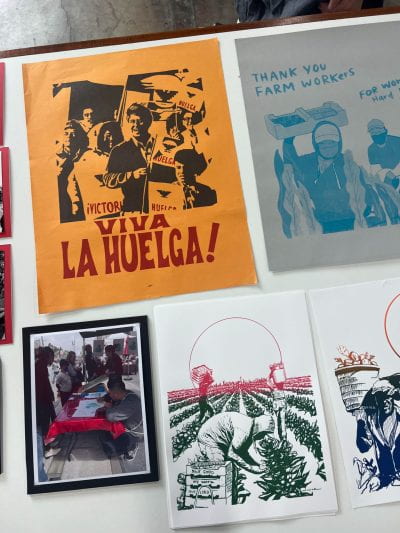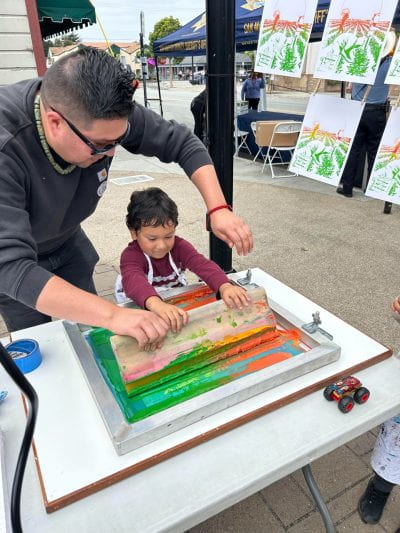Your Food, Our Land, His Art

Editor’s note: In May 2024, Oscar López was featured on KRON 4 to discuss his participation in the Fort Mason Spring Art Walk.
Artist Oscar López, ’21 MFA Pictorial Arts, wants you to know that farmworkers and their communities are essential.
“During the pandemic, I saw this debate and discourse about whether or not farmworkers were essential,” he says. “We didn’t have vaccines. The entire world was paralyzed due to the health crisis. If we want to define the essentials of humanity and human needs, food is number one. The people who are producing food should have some value as well.”

López brings his artwork to Bay Area farmer’s markets to connect consumers to the people who grow, pick and distribute their food. Photo courtesy of Oscar López.
As the grandson of a farmworker who traveled to the U.S. during the bracero program, López was struck by how disconnected consumers appeared to be from the people who cultivated, picked and distributed their food — sometimes amidst orange skies during wildfire season, sometimes without access to masks and many times at their own peril. He decided to put his artistic skills to the test by creating art that spread awareness about the impact farmworkers have in California.
The project started with a series of screen printed posters depicting farmworkers laboring under the sun. He also brought his screen printing materials to farmers markets along the Bay Area peninsula from Pacifica to San Francisco’s Fort Mason and invited community members to try their hand at the press. For López, creating art is not only about the artistic process; it’s about the dialogue that art inspires.
“For me to screenprint 100, 200 pieces and give them away at farmers markets — that is a way to start a conversation,” he says. “I’m not saying I’ll change the world, but if we can have a conversation and can listen to each other — that, to me, is the beauty of visual art.”
When printing and sharing free images of farmworkers tending the land, López also has the chance to educate consumers about where their food comes from — and who nurtures the world.
“Go back millions of years and you’ll see cave paintings with hands and animals and stick figures,” he adds. “Why do we have the necessity to communicate in a graphic form? When we create art, we are communicating something that we feel is important; we are making sense of things we don’t know. And we can do that in any form.”
Though the screen printing workshops and giveaways helped increase awareness of farmworkers’ essential social and economic contributions along the coast, López felt it wasn’t enough. When he was awarded a $40,000 grant from the Creative Work Fund in San Francisco earlier this year, López decided to create a mosaic mural that would bring together farmworkers and the communities they serve.
As part of this project, he has interviewed a number of farmworkers based on the California coast, with the goal of humanizing farm workers while making the piece an authentic and recognizable representation of agricultural work. The theme?
“Your food, my work, our land,” he says, citing the message of one of his recent posters.

López teaches a child how to screen print at a recent farmer’s market. Photo courtesy of Oscar López.
He hopes to complete the mural by 2025, but in the meantime, López is expanding his scope by connecting with nonprofit organizations who support farmworker communities, including United Farm Workers. He hopes to bring together the Boys and Girls Clubs of Half Moon Bay and San Francisco in collaboration with Haight Street Art Center, where the youths will create posters that can be exhibited alongside the mural, and also to ensure that the next generation of consumers and community advocates can be better informed about who grows and cares for their food.
He’s hopeful that his medium of choice — a large city mural — will ensure that everyone, regardless of their economic background, race, nationality or age, can join the conversation. He saw the impact of public art at SJSU, when he served as a guide for the College of Humanities and the Arts’ Public Art as Resistance tours.
“I grew up in an environment where I was really limited to access to museums and galleries — the streets were my galleries,” he says. “Art should be free.”
At a recent farmers market in Pacifica, López observed a young child and his grandfather interacting with one of his posters depicting a man at work in the fields.
“I saw the kid turn to his mom and say, ‘Look, this is what Grandpa does!’ And it was reflected right there,” he says. “When the grandpa stopped by he said, ‘Oh wow, this is so cool. That’s what I do.’ And that made my day. This is what I want people to see — themselves reflected back. It was one of the best things ever.”




